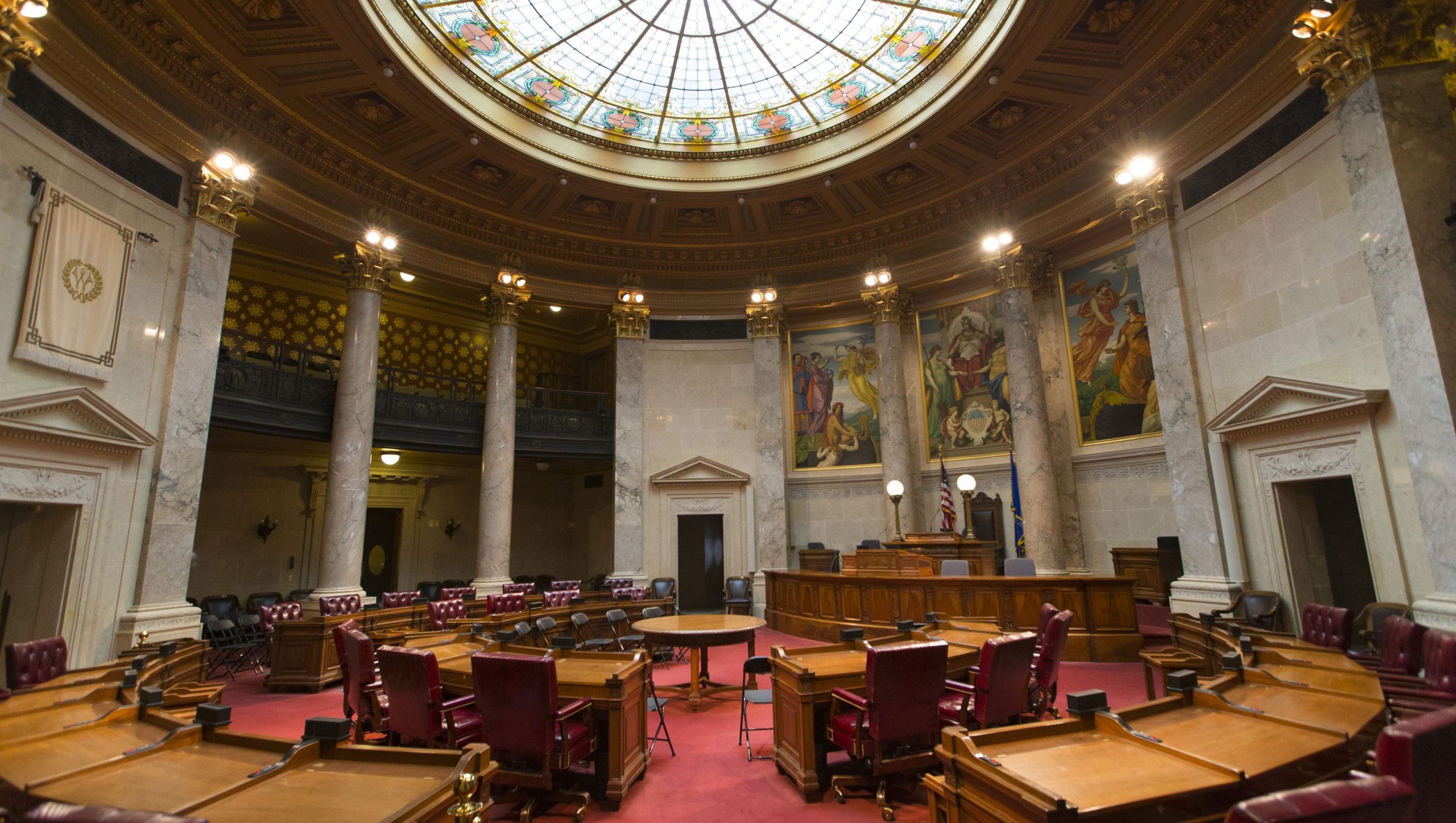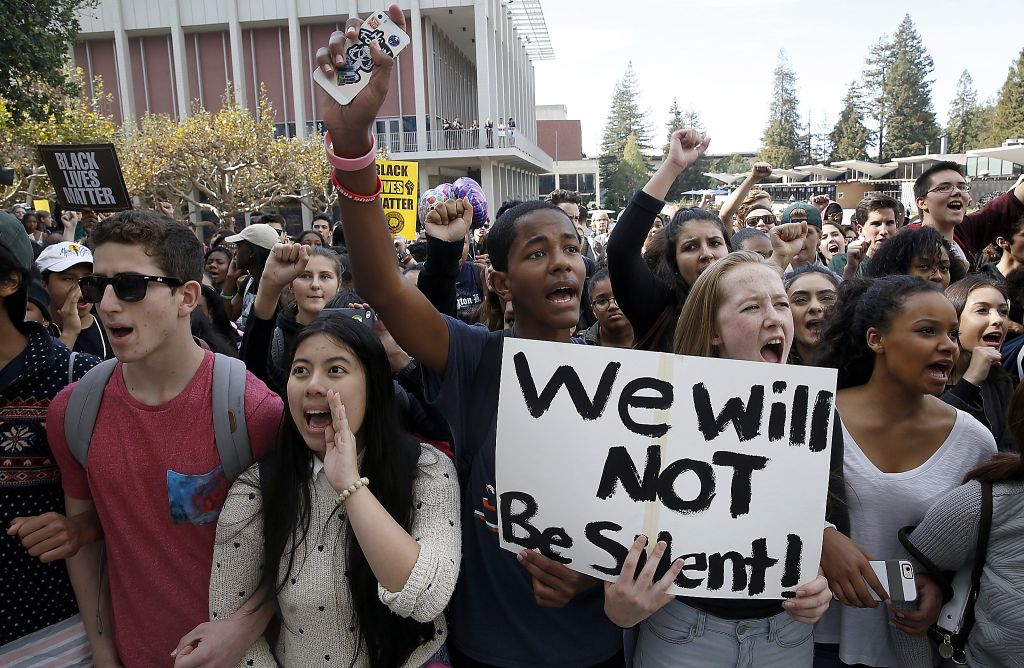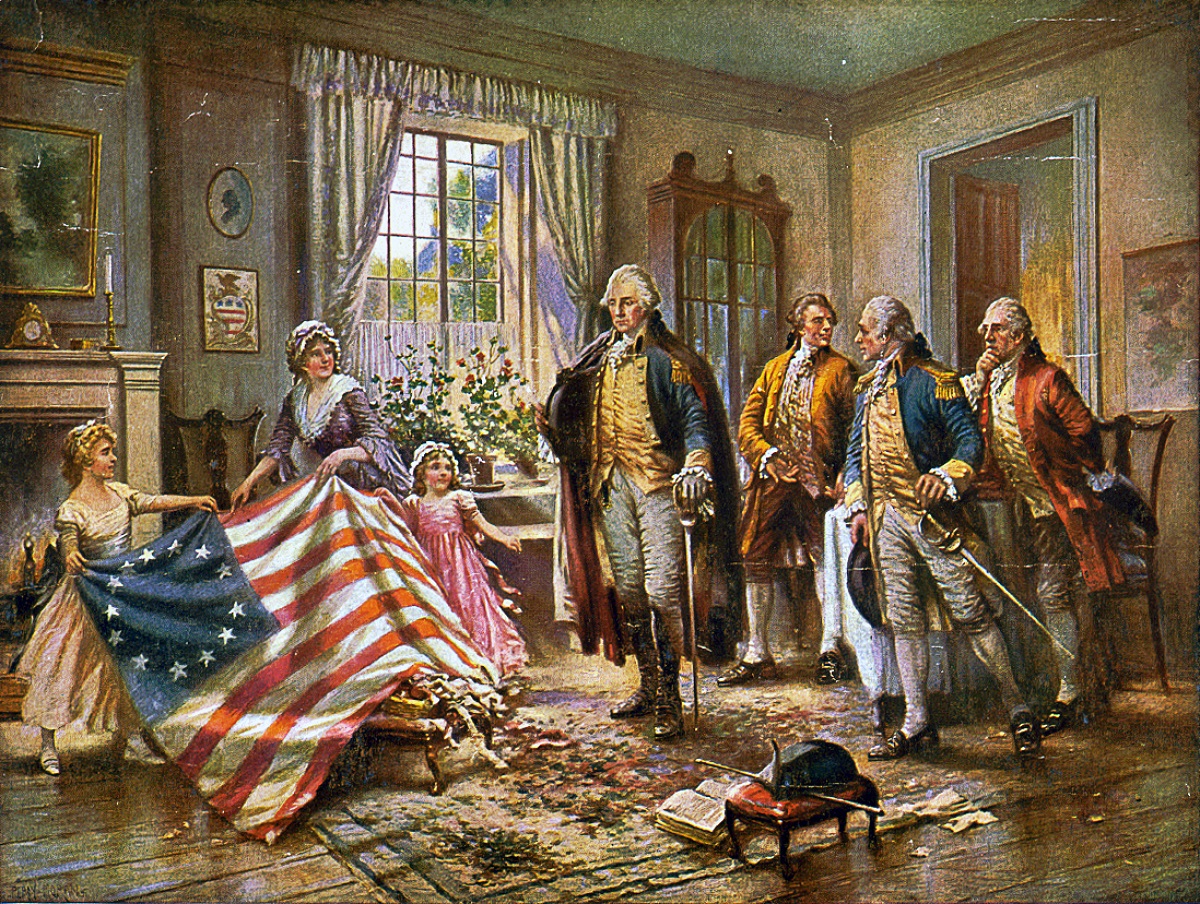Is the leftist dream now within reach? If President Trump loses, we will find out.
The Constitutional Authority of State Legislatures To Choose Electors

By John C. Eastman[1]
In a number of jurisdictions, state executive branch officials or courts have altered state election laws in ways that may be affecting the outcome of the presidential election, or at the very least creating unacceptable uncertainty about the results of the election. In Wisconsin, for example, the Wisconsin Elections Commission authorized local election clerks to “cure” spoiled ballots by adding missing addresses of witnesses, in violation of state law,[2] and it directed county clerks to ignore state voter ID laws for anyone claiming they were “indefinitely confined” because of COVID fears. North Carolina’s State Board of Elections unilaterally extended the deadline for returning absentee ballots by 6 days beyond what is permitted by statute,[3] even though the legislature itself had just recently declined to do so as it was making other changes to the state’s election laws in response to COVID.[4] Pennsylvania’s secretary of state likewise unilaterally ordered an extension of the deadline for receipt of absentee ballots, contrary to Pennsylvania law.[5] A federal court in Georgia ordered an extension of that State’s deadline for return of absentee ballots, contrary to state law.[6] A state court judge in Michigan ordered that state’s deadline for receipt of absentee ballots extended by a full two weeks,[7] again contrary to state law,[8] and some Michigan counties have allegedly denied the Trump campaign the access to observe and challenge the counting of absentee ballots to which it is entitled by state law.[9] Election supervisors in some Nevada counties reportedly ordered that absentee ballots be processed without signature verification, as required by Nevada law.[10]
All of these actions are undermining the constitutional authority of the Legislature of each State to determine the “Manner” in which the State’s presidential electors are appointed. See U.S. Const. Art. II, § 1, cl. 2 (“Each State shall appoint, in such Manner as the Legislature thereof may direct, [the] Number of Electors” to which it is entitled). The question is: What can be done about it? For most of the violations, the damage has already been irretrievably done. The ballots that have been illegally “cured,” or accepted without complying with voter ID requirements, or accepted after the statutory deadline, have been intermixed with valid ballots and can no longer be identified so that the illegally-cast ballots can be deducted from the totals. A new election could be held, free of the taint of the illegal conduct, as occurred in 2018 after an illegal ballot harvesting scheme was uncovered in the election for North Carolina’s 9th congressional district, but it would have to be statewide to avoid violation the Fourteenth Amendment’s Equal Protection Clause, see Bush v. Gore, 531 U.S. 98, 109 (2000), and the December 14 statutory deadline for the meeting of electors makes that logistically implausible, placing the very ability of the affected states to appoint electors at risk. But there is a third alternative.
In the early decades of our nation’s history, most state legislatures selected the state’s presidential electors themselves; only after 1824 did the majority of state legislatures provide for choosing electors by popular election. Nevertheless, the constitutional power to decide on the method for choosing electors remains exclusively with state legislatures. The Supreme Court has described the constitutional authority of the state legislatures to determine the manner of choosing electors as “plenary.” See McPherson v. Blacker, 146 U.S. 1, 35 (1892); see also Bush v. Gore, 531 U.S. at 104. It has even noted that, “whatever provisions may be made by statute, or by the state constitution, to choose electors by the people, there is no doubt of the right of the legislature to resume the power at any time.” McPherson, 146 U.S. at 35 (quoting with approval Sen. R., 1st Sess. 43rd Cong. No. 395); see also Bush v. Gore, 531 U.S. at 104 (“The State, of course, after granting the franchise in the special context of Article II, can take back the power to appoint electors”). To be sure, “at any time” would likely not allow the Legislature to pick its own slate of electors after the results of a fair election which had been conducted pursuant to the Legislature’s existing statutory procedures, merely on the grounds that the Legislature would have preferred a different outcome. See Bush v. Gore, 531 U.S. at 104 (“When the state legislature vests the right to vote for President in its people, the right to vote as the legislature has prescribed is fundamental”). But such is not the case when the existing procedures were not followed, and when significant statistical anomalies raise serious questions about whether the election was fair. In such cases, the “manner” for choosing electors set out by the Legislature was not followed; the constitutional default of the Legislature exercising its plenary power—or, rather, resuming that power—is therefore again at the forefront. See id. (noting that the right to vote in an election for presidential electors is fundamental when done in the manner “the legislature has prescribed”).
This is in accord with federal law as well. Section 2 of Title 8 provides: “Whenever any State has held an election for the purpose of choosing electors, and has failed to make a choice on the day prescribed by law, the electors may be appointed on a subsequent day in such a manner as the legislature of such State may direct.” 3 U.S.C. § 2. The intermingling of illegal with legal ballots in significant enough numbers that the election cannot be validly certified, means that the State “has failed to make a choice” on election day, and the appointment of electors therefore devolves back on the Legislature of the State, which has plenary power to decide whether to exercise that appointment power itself, or to craft some other mechanism for appointing the State’s slate of electors.
This is what the Florida legislature was prepared to do in 2000, prior to the resolution of that State’s election controversy by the Supreme Court in Bush v. Gore. The vote on election day had been certified by the Florida Secretary of State as a Bush victory, but the State Supreme Court had, contrary to state law, ordered a recount in only heavily-Democrat counties. The expectation was that such a partial recount would have tilted the election to Gore, and therefore either invalidated the initial certification or at least called it into question. The relevant committees in both houses of the State legislature therefore crafted identical resolutions that would allow the Legislature to reclaim the plenary power of choosing its own slate of electors (with the expectation that the Legislature’s slate would support Bush).[11]
There is more than enough in the way of alteration of the legislatively approved manner of choosing electors to warrant legislatures in several states taking back their plenary power to determine the manner of choosing electors, even to the point of adopting a slate of electors themselves. Moreover, when one adds into the mix the significant statistical anomalies that raise serious concerns of outright election fraud, the Legislatures should feel themselves duty bound to rectify the situation by the constitutional remedy available to them.
A quick review of just some of the statistical anomalies should highlight the point. There is a statistical analysis based on Benford’s Law,[12] which can determine with a high degree of certainty whether there has been manipulation in the reported vote totals. An analysis of the 15 largest counties in Wisconsin demonstrated that almost all of the county precinct totals were as Benford’s Law would predict—with the exception of the four counties comprising the Milwaukee metropolitan area. In those four counties, the Trump tallies were consistent with what Benford’s Law would predict, but the Biden tallies reflect “a significant deviation from the expected”—indeed, only a .002% probability.[13] Such a highly improbable result, if it is confirmed by reputable statisticians,[14] is near dispositive proof of vote manipulation.
Other statistical anomalies have been observed in other swing states as well. In Wisconsin and Michigan, there appears to have been a jump in the vote tallies at one point with 100% of the increase going to Biden.[15] In Pennsylvania, Vice President Biden achieved an extraordinarily high absentee vote in certain areas of the State that appears to be implausible. In Delaware County, for example, his absentee vote was nearly 35 points higher than Democrat registration in the County.[16]
These statistical anomalies, particularly when combined with hard evidence of voters barred from voting because someone had, unbeknownst to them, requested and at times even voted an absentee ballot in their name, strongly support the conclusion that something is amiss here, and that Legislatures simply must investigate and then, if convinced that the election was too fraught with risk of fraud to be properly certified, exercise their prerogative to legislatively designate a slate of electors.
[1] Dr. Eastman has a Ph.D. in Government from the Claremont Graduate School and a J.D. from the University of Chicago Law School. He is the Henry Salvatori Professor of Law & Community Service and former Dean at Chapman University’s Fowler School of Law, and a Senior Fellow at The Claremont Institute. He is also the 2020-21 Visiting Scholar in Conservative Thought and Policy at the Benson Center for the Study of Western Civilization at the University of Colorado Boulder.
[2] Wis. Stat. § 6.87(6d) provides: “If a certificate is missing the address of a witness, the ballot may not be counted.” The directive issued by the Elections Commission on October 19, 2020—just two weeks prior to the election—provided, in contrast, “that the clerk should attempt to resolve any missing witness address information prior to Election Day if possible, and this can be done through reliable information (personal knowledge, voter registration information, through a phone call with the voter or witness). The witness does not need to appear to add a missing address.” Meagan Wolfe, Administrator, Wisconsin Elections Commission, “Spoiling Absentee Ballot Guidance,” p. 3 (Oct. 19, 2020), available at https://elections.wi.gov/sites/elections.wi. gov/files/2020-10/Spoiling%20Ballot%20Memo%2010.2020.pdf.
[3] N. C. Gen. Stat. Ann. §163–231(b)(1) requires absentee ballots to be “received” by the county board of elections “not later than 5:00 p.m. on the day of the” election, but for ballots returned by mail, subsection (b)(2) extends the receipt deadline by three days if postmarked on or before election day.
[4] The Supreme Court declined to stay lower court judgments permitting the extension, see Moore v. Circosta, No. 20A72, 2020 WL 6305036 (U.S. Oct. 28, 2020), but the case is still being litigated in the lower courts on the merits.
[5] 25 Pa. Stat. Ann., Tit. 25, §3146.6(c) requires that, in most cases, absentee ballots “be received in the office of the county board of elections no later than eight o’clock P.M. on the day of the primary or election.”
[6] Ga. Code § 21-2-386 permits counting only of absentee ballots received “prior to the closing of the polls” on election day. The U.S. District Court for the Northern District of Georgia issued a preliminary injunction ordering that ballots could be received within three days after election day. New Georgia Project v. Raffensperger, No. 1:20-CV-01986-ELR, 2020 WL 5200930 (N.D. Ga. Aug. 31, 2020). That injunction was stayed by the Eleventh Circuit, New Georgia Project v. Raffensperger, 976 F.3d 1278 (11th Cir. 2020), but the litigation is ongoing.
[7] Michigan Alliance for Retired Americans, et al. v. Jocelyn Benson, et al., No. 20-000108 (Mi. Ct. Cl. 2020), reversed, No. 354993, 2020 WL 6122745 (Mich. Ct. App. Oct. 16, 2020).
[8] Mich. Comp. Laws § 168.764a provides that “An absent voter ballot received by the clerk or assistant of the clerk after the close of the polls on election day will not be counted.”
[9] MCL § 168.765a provides that “at least 1 inspector from each major political party must be present at the absent voter counting place.” That issue is also currently in litigation. Donald J. Trump for President, Inc. v. Jocelyn Benson, No. 20-000225 (Mi. Ct. Cl., filed Nov. 4, 2020), emergency motion for declaratory relief denied (Nov. 6, 2020). The case is still pending.
[10] Nev. Rev. Stat. § 293.325 requires signature verification before an absentee ballot can be counted.
[11] See Dexter Filkins and Dana Canedy, “Contesting the Vote: The Legislature; Committees Approve Resolutions Allowing Florida Lawmakers to Name Electors,” New York Times, A25 (Dec. 12, 2000), available at https://www.nytimes.com/2000/12/12/us/contesting-vote-legislature-committees-approve-resolutions-allowing-florida.html.
[12] In layman’s terms, Benford’s Law recognizes the phenomenon that for the leading digit in a list of numbers (such as precinct vote tallies), the number 1 occurs with a great statistical frequency (about 30%) than the number 2 (about 17.5%, on down to the number 9 (only about 4.5%). See, e.g., “Benford’s Law,” at https://mathworld.wolfram.com/BenfordsLaw.html; see also Patrick Corn, Hua Zhi Vee, and Christopher Williams, “Benford’s Law,” at https://brilliant.org/wiki/benfords-law/. But see Walter R. Mebane, Jr., “Inappropriate Applications of Benford’s Law Regularities to Some Data from the 2020 Presidential Election in the United States” (Nov. 9, 2020) (now claiming that Benford Law first-digit analysis is “not useful for trying to diagnose election frauds,” even though Mebane is famous for applying Benford’s Law analysis to conclude “that the 2009 election [in Iran] was affected by significant fraud, see https://election.princeton.edu/2009/06/18/flash-statistical-evidence-for-iranian-election-fraud/).
[13] See Joe Hoft, “Audit Statistical Technique Known as ‘Benford Analysis’ Points to Milwaukee Precincts as Central Point to Uncover Fraud,” GatewayPundit.com (Nov. 7, 2020), available at https://www.thegatewaypundit.com/2020/11/using-audit-statistical-technique-known-benford-analysis-wisconsin-precincts-milwaukee-absolutely-investigate-fraud/.
[14] The analysis cited by Hoft in note 12 above was published anonymously, so the qualifications of the person performing the analysis are not known at this time.
[15] See id. The Twitter account that originally published the screen shots of the anomaly has been suspended. See https://twitter.com/duckdiver19/status/1323973247189221378.
[16] If his vote total for election day in-person voting was lower than registration by a similar amount, this anomaly could be explained by different tactical efforts by the two campaigns, but it was not. Biden’s in-person total was .1% higher than Democrat registration in the County. And the Delaware County absentee vote for Biden was about 16% higher than the statewide average.
The American Mind presents a range of perspectives. Views are writers’ own and do not necessarily represent those of The Claremont Institute.
The American Mind is a publication of the Claremont Institute, a non-profit 501(c)(3) organization, dedicated to restoring the principles of the American Founding to their rightful, preeminent authority in our national life. Interested in supporting our work? Gifts to the Claremont Institute are tax-deductible.
State lawmakers must protect education from activism.
The 1776 Report demonstrates a more sophisticated grasp of history than that of its critics.
The Biden Administration is on track to stiff our desperate working class.
An excerpt from the 1776 Commission's report.
An excerpt from the 1776 Commission's report.





